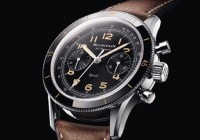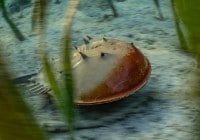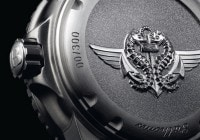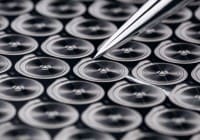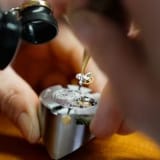
Search in Issues
Chapters
List of parts
Chapter 5
THE HEART of the mechanical watch
An escapement and an oscillator, or the power to bring inert materials to life.
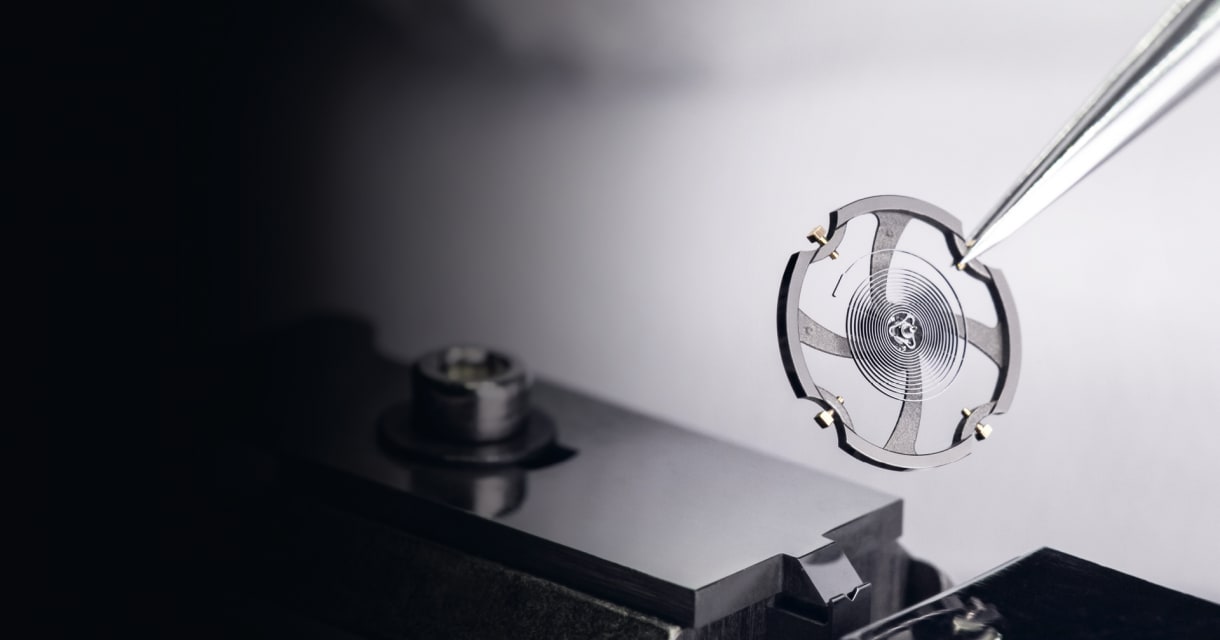
The many SKILLS developed by the first FAMILY-RUN WORKSHOPS established a bedrock of often UNIQUE EXPERTISE.
Nivarox-FAR, a double-barreled name which is little known to anyone except watch connoisseurs. Yet the majority of the components produced by this company are the ones that give life to all watch mechanisms. Whatever its shape and whether visible or not, the heart of the watch constitutes a vital “organ”, of which the famous ticking sound that so eloquently represents the world of watchmaking constitutes one of the most important means of conveying dreams and emotions. Giving life to a mechanical timepiece has been the business of this watchmaking company for 170 years. A daily feat made possible thanks to a unique combination of age-old know-how and rare industrial skills. An immersion into the heart of Blancpain watches….
The heart of the Swiss Made mechanical watch is the history of many complex watch components, but also that of more than a century and a half of industrial mergers and concentrations. Whether in the field of assortments (components of the escapement, i.e. the pallets, the escape-wheel and the roller, whose function is to let the energy escape with the minimum of constraints), balances (small flywheel which, coupled with the balance spring via a staff, serves to regulate the release of energy) and balance-springs (small flat spring coupled to the balance by the collet with which it forms the regulating or oscillating element), the many skills developed by the first family-run workshops established a bedrock of often unique expertise that was progressively regrouped to create real industrial entities. This trend began in 1895, when the five most important Swiss balance-spring manufacturers agreed to give up their sacrosanct independence in order to join forces by setting up the Société des Fabriques de Spiraux Réunies (commonly known as SR and into which the Nivarox SA balance-spring factory would be integrated right from the time of its founding in the 1930s). The first industrial concentration in the history of Swiss watchmaking, this represented a veritable revolution! In 1932, it was followed by the regrouping of the manufacturers of assortments and balances under two new corporate names: the Fabriques d’Assortiments Réunies (FAR) and the Fabriques de Balanciers Réunies (FBR). After several intermediate stages, 1983 marked the end of the concentration of industrial activities related to the heart of the mechanical watch which, under the direct impetus of Nicolas G. Hayek, were brought together under one roof, that of Nivarox-FAR.
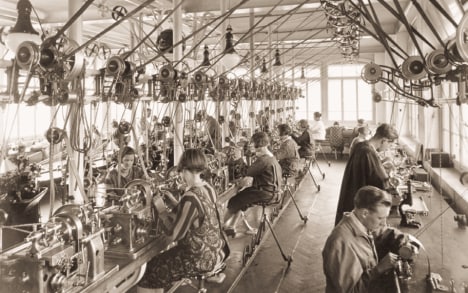
Escapement workshop in Le Locle circa 1925, which became part of FAR in 1932.
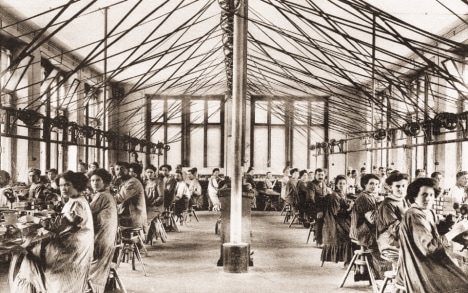
Balance-making workshop in La Sagne circa 1910, which became part of FBR in 1932.

Profile-turning operation on balance screws requiring trued gold wire to produce these components measuring only a few tenths of a millimeter.
The COLLABORATION between Blancpain and Nivarox-FAR has continued to produce EXCEPTIONAL COMPONENTS.
Today, Nivarox-FAR’s activities are spread over various locations in the Jura Arc region: Le Locle (head office), La Chaux-de-Fonds (Le Crêt-du-Locle), Fontaines, Marin, Boncourt and Villeret (the village where Blancpain was founded in 1735), and are based on a sum of skills and experience that is quite simply unparalleled in the watchmaking world. A heritage that makes the company based in Le Locle the guardian of a unique tradition and skills as well as the benchmark for Swiss Made escapements and oscillators, in terms of research and development as well as manufacturing and industrial production.
The collaboration between Blancpain and Nivarox-FAR has continued to produce exceptional components capable of meeting ever-changing qualitative, chronometric and aesthetic requirements.
In concrete terms, the heart of Blancpain watches is formed by the escapement and the oscillator, whose constant beating gives life to the entire watch. Made up of between 13 and 17 or more components (among the hundreds of parts in each Blancpain movement) weighing a total of no more than 0.08 grams (!), it is produced in different materials with an accuracy of up to one tenth of a micron and measured to the nearest hundredth of a micron! Such extraordinary figures simply defy comprehension, whether in terms of weight or size. They also represent challenges in terms of manufacturing, frequently pushing the physical capacities of the means of production to their ultimate limits (and sometimes even beyond). These extreme conditions require technical mastery beyond traditional standards, both in the manufacture of production tools and in the thousands of components produced daily by Nivarox-FAR’s workshops. Welcome
to the world of nanomechanics!
A vast range of SKILLS that are combined to manufacture IMPECCABLY FINISHED products.
To discover the elements composing the heart of Blancpain watches means exploring the entire range of Nivarox-FAR’s expertise. All the professions exercised within the Le Locle-based company are involved in producing escapements and oscillators: from traditional micromechanics (profile-turning, cutting, rolling, press making, etc.) to new technologies (silicon and LiGA). A vast range of skills that are combined to manufacture impeccably finished products that are ever more efficient and adapted to the challenges of our modern society.
In keeping with its pioneering tradition, Blancpain was one of the first brands to integrate escapements and oscillators made of traditional materials (steel, brass, ruby) that are non-magnetic (silicon and LiGA) and lead-free, making it possible to handle both the constraints of watchmaking precision and the increase in magnetic fields (handbags, tablets, smartphones, airport gates, etc.).
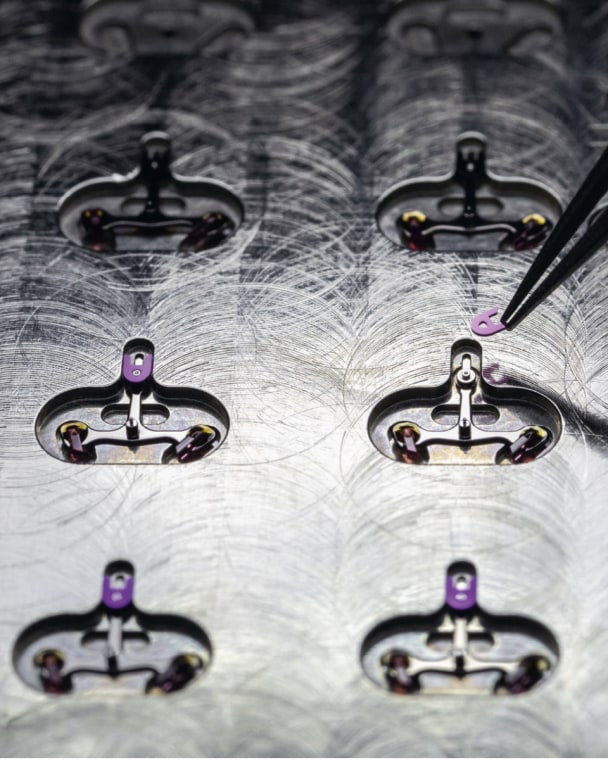
Fitting an applied silicon horn on pallets made from non-magnetic lead-free material.
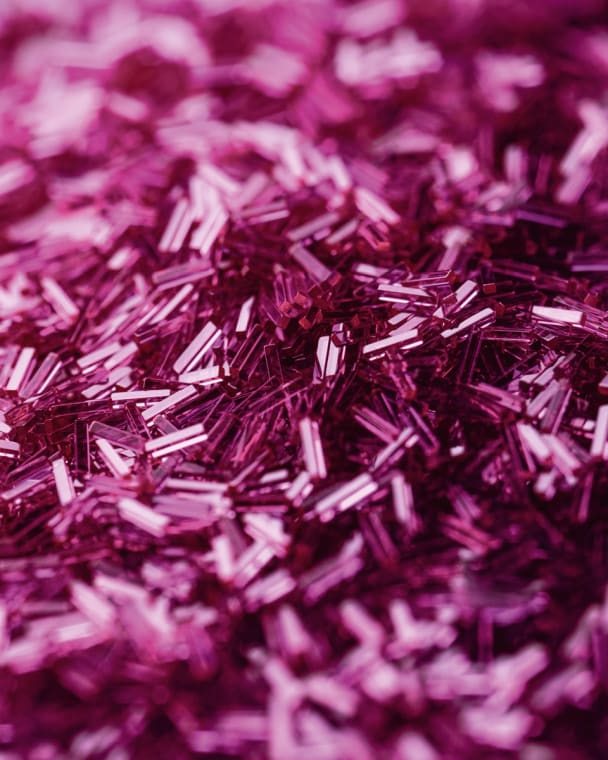
A batch of finished pallet-stones in monocrystalline red ruby.
PALLET-STONE, one of the small red rubies placed on the arms of the lever and measuring no more than a millimeter.
In the field of escapements, production of the pallets alone requires the use of more than a dozen skills: profile-turning and burnishing for the steel pallet-staff (whose pivot diameter sometimes measures barely 0.08 mm, or less than that of a hair); galvanic growth for the pallet-body; silicon engraving for the applied horns as well as coating with an Epilame surface treatment and arranging it so as to avoid any spreading of watch lubricants. In addition, nearly 30 industrial operations are required to form the pallet-stones, small red rubies placed on the arms of the lever and measuring no more than a millimeter.
The escape-wheel, like its pinion, is made of traditional steel. With a diameter varying between 3.9 and 5.75 mm, its production requires no less than 70 machining operations, of which one of the rarest represents an authentic technical feat: cutting the bevel, the locking-face and the impulse-face of the 15 or 20 teeth of the wheel in just a few seconds on a single machine (which itself constitutes a feat of miniaturization and mechanical complexity entirely developed in-house by Nivarox-FAR)! This is all the more important in that the thin ends of each tooth are designed to withstand half a billion impacts annually.
Producing the Blancpain balance requires extremely specialized TOP-OF-THE-RANGE MANUFACTURING.
The last component of the escapement is the roller, a kind of small twin-level disk, which is profile-turned from nickel-plated brass and whose role is to receive the impulses from the pallets to the balance via its impulse pin. The latter, produced by means of 28 machining and polishing operations, has a diameter of 0.2 to 0.6 mm and a thickness ranging from 0.35 to 1.1 mm, making it the smallest jewel in mechanical watch movements.
Creating the oscillator, while drawing on other skills, also represents a wealth of know-how and technical sophistication.
The Blancpain balance, recognizable by its very specific design, is a small flywheel made of copper alloy (Glucydur) or titanium with a diameter of between 7.4 and 10.5 mm. Producing it requires extremely specialized top-of-the-range manufacturing, particularly in terms of its geometry and finish (sandblasted, diamond-polished and polished), whose quality and precision are such that they enable watchmakers to dispense with the traditional index-assembly and instead use fine adjustment via balance screws. The latter, measuring barely half a millimeter, are so small that each of the operations required to carry them out, particularly profile-turning, pushes the physical limits of production, as does the highly specific tapping operation performed on the screws of Blancpain balances by matching them with the screw-cutting procedure.
The balance-staff is another feat achieved by Nivarox-FAR’s profile-turners. With a minimum thickness of 1.41 mm, the Blancpain balance-staff has a pivot at its end with a diameter of just 0.07 mm, making it the smallest piece of burnishing of the watch movement!

Tweezers adapted to each employee are used to measure the angle of the Breguet overcoil on a balance-spring made of Nivarox, an alloy cast by Nivarox-FAR.
Non-magnetic, lead-free and indeformable silicon balance-springs serving to achieve PEERLESS CHRONOMETRIC PERFORMANCE.

An operation that involves separating the balance-spring from its silicon base.
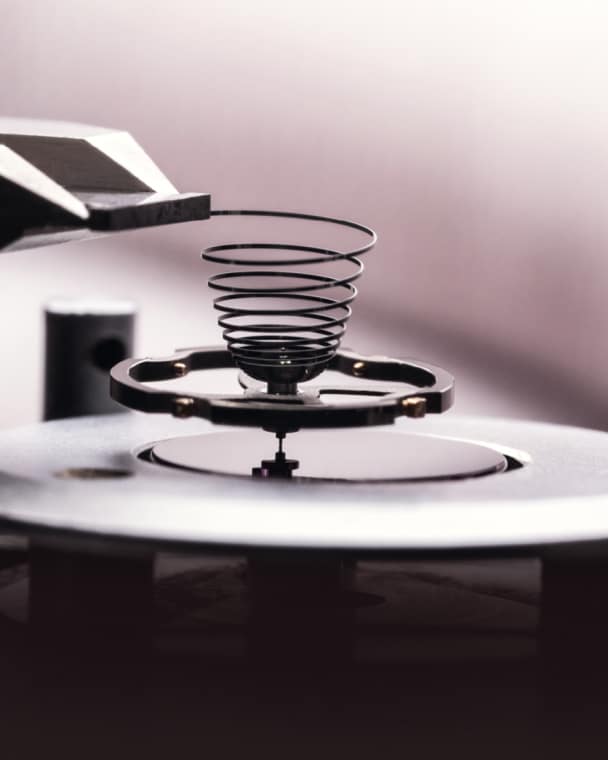
The elasticity of a silicon balance-spring seen during a counting operation serving to measure the frequency of the oscillator.
The last element of the oscillator is the balance-spring, a small flat spring attached to the balance on which the precision of the watch’s operation depends to a great extent. For its various collections, Blancpain uses two distinct types of balance-springs; the first with a flat curve and a Breguet overcoil (also called Phillips). This type of balance-spring, made from a Nivarox alloy, requires more than 15 traditional operations, from treating the wire to determining its definitive shape. The complex formation of the Breguet overcoil is then carried out manually. This is such a delicate operation that it is only possible to produce a few units per day, even for the most experienced timers. The control required for this type of operation is such that it demands finely customized tools for each timer according to the specific nature of their working technique and the various types of Breguet overcoil.
For this family of balance-springs, Nivarox- FAR has a foundry created at the initiative of Nicolas G. Hayek, who wanted to internalize the manufacture of watch alloys in order to achieve complete vertical integration of balance-spring production. This foundry was established in 2007 with the help and support of Hayek Engineering’s metallurgical knowledge.
This first family of balance-springs can be associated with two types of adjustment: by Nivatronic pinning up to the collet, i.e. adjustment on an Omegamétric machine; and by traditional pinning up to the collet through clamping the inner end of the balance-spring in a pin-type stud.
The second family, the silicon balance-spring, is the result of a completely different manufacturing process: deep ion etching on silicon disks, called wafers. This technique makes it possible to obtain shapes with an accuracy that simply cannot be achieved by traditional processes, as well as to use an alloy that is non-magnetic, aesthetically pleasing and resistant to wear over time.
Whatever the technique used, the diameter of the balance-spring is barely 35 microns, i.e. half as small as that of a hair, while it weighs just 0.0025 grams, seven times lighter than a grain of rice! Here too, Nivarox-FAR was a pioneer in the manufacture of silicon balance-springs, developed within the CSEM. The Swatch Group was one of the first watchmaking entities to invest immediately in this technology and to use its characteristics, which aim to achieve the excellence of exceptional chronometry.
The production of all the components making up the heart of Blancpain watches is based on Nivarox-FAR’s core professions, namely nanomechanics. These are often discreet professions, which require know-how and intuition to produce components that are both extremely small and high-performance.
Engineering and mechanics are at the heart of all the Nivarox-FAR skill sets. In order to preserve and perpetuate these rare forms of expertise, passed on from generation to generation or even from father to son, it is essential to carry out continuous training. To this end, the company headquartered in Le Locle trains around 40 apprentices annually in collaboration with the most important Swiss polytechnical and engineering schools. Nevertheless, Nivarox-FAR’s skills are so specific that they can only be acquired through contact “in the field” and “with old-timers” who are unique custodians of the veritable DNA of the company’s know-how.
Nivarox-FAR is a company with a wealth of skills that can only exist through the feats achieved by the watch brands that Blancpain so ably represents. These ties are all the stronger in that Blancpain’s original birthplace lies so close to one of the most complex skills mastered by Nivarox-FAR; the adjustment of sprung balances, which is now carried out in Villeret in the heart of the Bernese Jura.
We cannot conclude this article without underlining the important role played by Nivarox-FAR in the development of Swiss Made timepieces. This company, which looked set to close in the early 1980s, as was the case for similar companies in the rest of the world and in Europe in particular, was saved thanks to the will and visionary industrial foresight of an exceptional man, the late Nicolas G. Hayek.
What a beautiful tie-in for this company to be able to serve Swatch Group and Blancpain, a brand managed by Nicolas G. Hayek’s grandson, Marc A. Hayek.
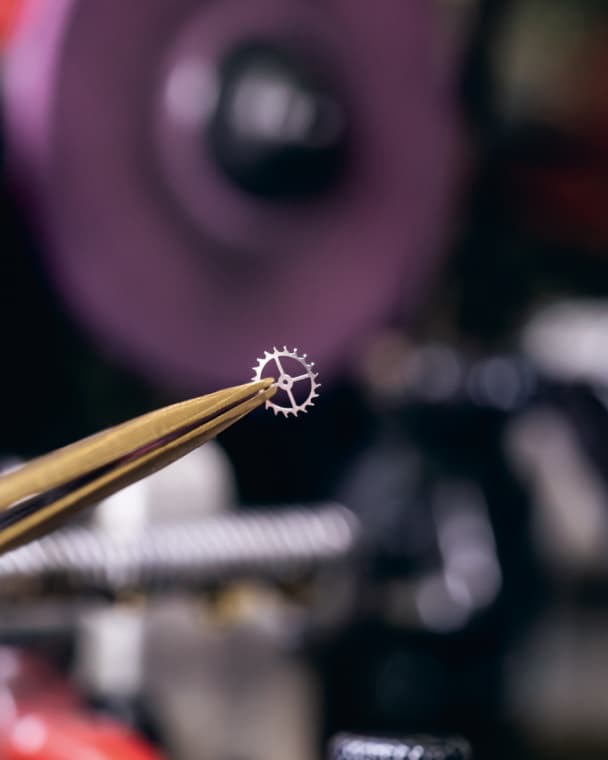
Pinion-free escape-wheel, a nanomechanical feat:several dozens of correcting operations on each part stemming from the micromechanical genius of the 1960s, capable of performing three operations simultaneously on each tooth.

